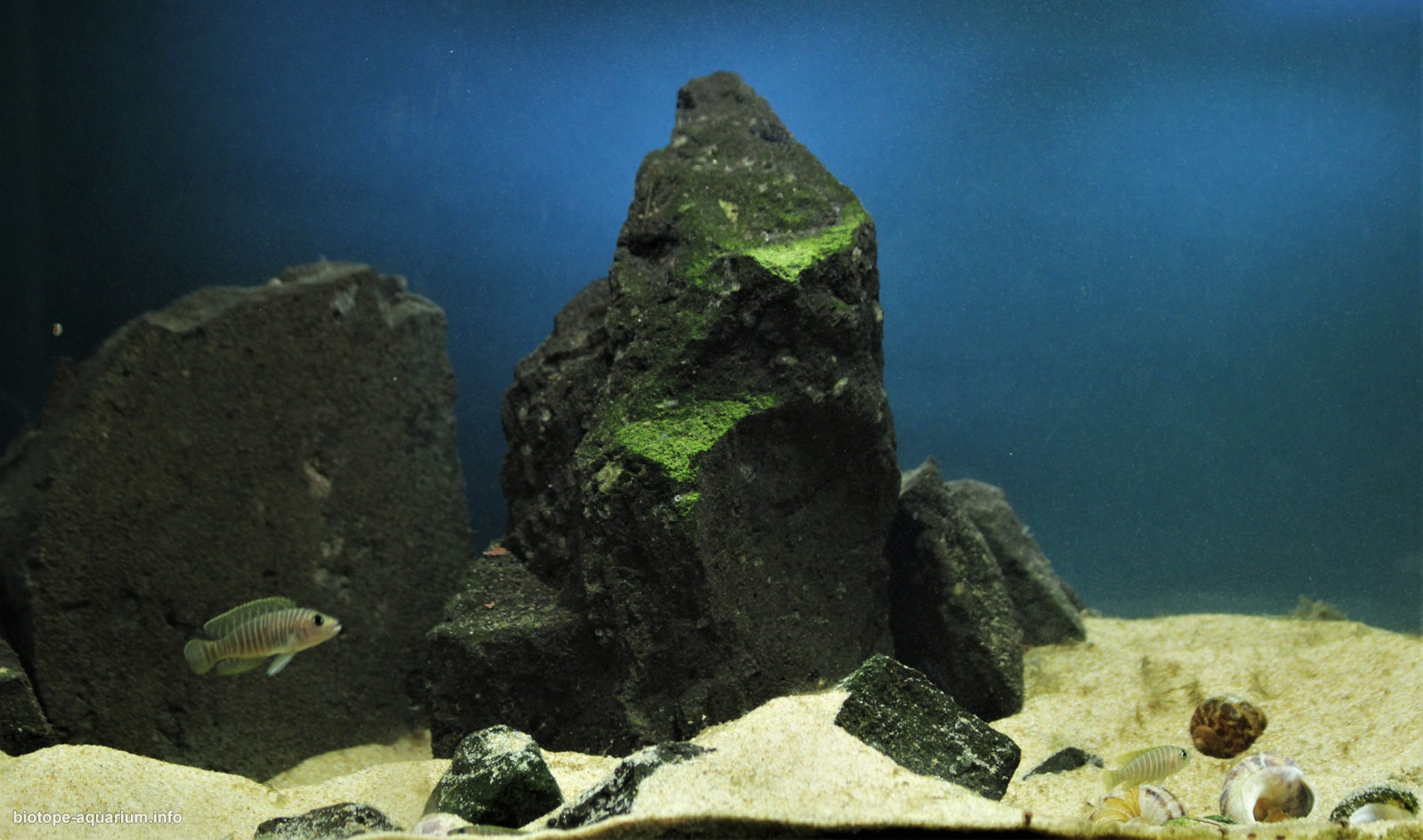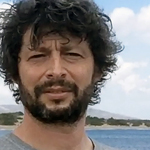Kigoma, Edith Bay, Lake Tanganyika, Tanzania
89th place in Biotope Aquarium Design Contest 2017
![]() Italy. Lorenzo Strolighi
Italy. Lorenzo Strolighi

Volume: 75 L
Dimensions: 62x32x40 cm
List of fishes: Neolamprologus similis
List of plants: Pistia stratoides
Description of decorations: Internal filter Duetto DJ100 + aquarium heater, Fluorescent lamp 36w 6500K
Description of equipment: 2x9w Led PL lamp 6500°K, External filter Eden 511.
Water parameters: PH 8.5, Conductivity: 700 microSiemens/cm, T: 24-29 °C.
Description of the area surrounding the biotope: Tanganyika is second largest lake by volume in the world and the deepest lake in Africa (1470m). Tanganyika has the largest number of endemic cichlid genera of all African lakes, it’s hold more than 250 species of cichlid and almost of them are endemic to the lake. Among the endemic species are two of the world’s smallest cichlids, Neolamprologus multifasciatus and Neolamprologus similis and both are shell dwellers..
Description of the underwater landscape of the biotope: Tanganyika is second largest lake by volume in the world and the deepest lake in Africa (1470m). Tanganyika has the largest number of endemic cichlid genera of all African lakes, it’s hold more than 250 species of cichlid and almost of them are endemic to the lake. Among the endemic species are two of the world’s smallest cichlids, Neolamprologus multifasciatus and Neolamprologus similis and both are shell dwellers.
Description of the parameters of the habitat: The water is extremly alkaline with a PH of around 9, coductivity range from 670 μS/cm to 690 μS/cm and temperature range is from about 24° to 28/29°.
List of fishes: Neolamprologus leleupi, Neolamprologus brichardi, Altolamprologus calvus, Altolamprologus compressiceps, and fishes from genera Lepidiolamprologus, Chalinochromis, Julidochromis.
List of plants: Floating macrophytes: Nymphaea, Trapa, Azolla, Pistia, Submerged macrophytes: Potamogeton, Ceratophyllum, Utricularia.
Sources of information:
Comments of the members of the jury of Biotope Aquarium Design Contest 2017

The aquarium you design for the species you feed does not represent the region where the species lives unfortunately. I would recommend you to use less rock and more snail shell to fill the bottom of aquarium. I also wish that the shells used were covered with sediments and moss.

It is too small amount of snail shells. I would like to see more stones placed naturally to give the aquarium some depth.

It looks much better as a sketch. Rather empty, unfinished. The stones are good. But there is not enough of atmosphere.
